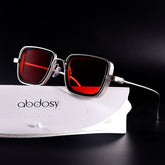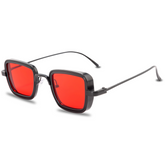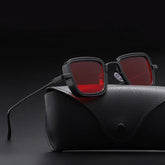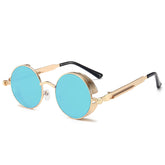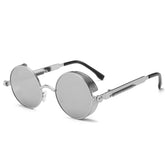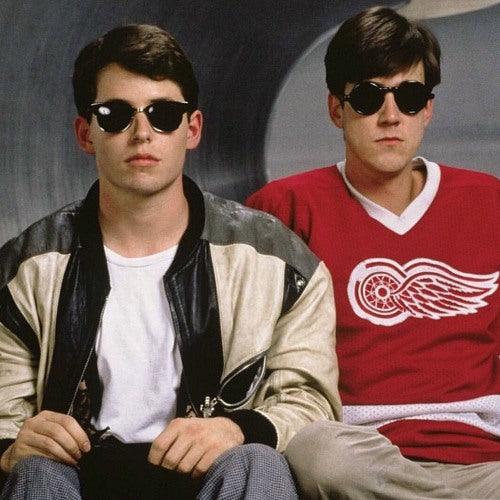Anthony Lee - Dec 8, 2022
Parts of Sunglasses Names

What are All the Parts of Glasses
When it comes to glasses, many people don’t consider the science and engineering that goes into creating a pair of glasses. From the frames to the lenses, each part plays an important role in providing vision correction. Understanding all the parts of glasses can help you get a better grasp on what type of glasses are right for your eyes. This article will provide an overview of all the parts of glasses, so you can understand how they work and their individual purposes.
1.Nose Pads

Nose pads are a common accessory for glasses and sunglasses. They provide comfort and style to the frames, and have been around since the 1800s. While most people assume that nose pads are just there for aesthetic purposes, they actually serve a much more important role in keeping your glasses on your face.
Nose pads come in different shapes, sizes and materials. Traditional metal nose pads are often found on older models of glasses, but there are a variety of options available today such as silicone or foam nose pads. These can be customized according to different facial features so that you get the best fit possible. Aside from being comfortable, nose pads also help distribute weight evenly across your face so you don’t feel any pressure points when wearing glasses or sunglasses for an extended period of time.
2.Glasses Frames

Glasses frames are an essential part of eyewear, both in terms of how they look and how they function. Frames come in all shapes, sizes, colors and materials to match any face shape or style. Whether you prefer a modern metal frame or a classic tortoise shell, there is no doubt that frames can add a touch of personal flare to any outfit.
When looking for the perfect pair of glasses frames, it is important to consider several factors such as your face shape, skin tone and lifestyle. To ensure the optimal vision prescription and fit for your eyesight needs, it’s best to consult with an eye care professional before selecting a frame type. With so many options available today from designer brands to budget-friendly alternatives – there’s sure to be something that meets your individual needs without compromising on quality or style!
3.Temples
Glasses temples are an essential part of the eyewear design process. Not only do they provide support for the frames, but they also offer a unique style to every pair of glasses. Manufacturers use different materials and shapes to give customers a variety of options when it comes to selecting their glasses.
The temple shape often follows the same general shape as the frame; rounded or angular, depending on personal preference. Temples come in several widths ranging from narrow to wide and can be made with metal or plastic materials. The length of temples typically ranges between 120mm-150mm, but can vary based on the wearer's head size and facial structure. Plastic temples are available in more colors and finishes than metal ones, allowing you to customize your look even further by matching them with other elements of your outfit.
4.Glasses Lenses

Glasses lenses are an essential part of any pair of glasses, as they are the component that actually refracts light onto your eyes. They come in a variety of shapes, sizes and materials to fit any prescription and lifestyle.
The most common type of lenses are plastic ones, which provide excellent optical clarity at a reasonable price. However, if you’re looking for more protection from the sun’s UV rays or want to reduce glare while driving at night, you should consider upgrading to higher-end lens materials such as polycarbonate or Trivex. These lenses offer superior protection from the sun’s harsh rays and can also be treated with special coatings such as anti-scratch or anti-reflective technology for improved visibility.
5.Glasses Bridge
Glasses bridge is a new and innovative way to help people who rely on glasses to see clearly. It is an adaptable bridge that attaches to any pair of glasses, allowing users to get the exact vision they need without having to buy a whole new pair of glasses. With this bridge, glasses can be adjusted in width, height, and tilt angle with just two screws. This means that users can customise their glasses for maximum comfort while also being able to adjust them as needed throughout the day.
The adjustable nature of the glass bridge makes it ideal for those who require corrective lenses due to conditions such as myopia or presbyopia, but also for those whose eyesight changes over time due to ageing or other factors. The flexible design allows for easy adjustment without having to worry about harming the frame of your existing eyewear.

6.Screws
Glasses screws are small, but they play a huge role in eyewear. Without them, glasses would not be able to stay together and hold their lenses in place. To ensure that your glasses stay secure, it is important to use the right type of screw and keep up with regular maintenance.
Most frames will come with standard “self-tapping” screws that are designed specifically for eyeglasses. Self-tapping screws have an angled tip that helps them create their own thread as they are screwed into the frame material. This type of screw is easy to use and will not strip or wear out easily like a standard wood screw might.
If you need to replace one of your screws, make sure you get the same size and type as the original screw so that it fits properly.
7.Pad arms

Glasses pads arms are an essential piece of protective gear that every competitive sports player should have. These items provide protection not just to the eyes and face, but also to the arms. They are usually made up of a foam or plastic material and can be found in many different sizes, styles, and colors. The main purpose of glasses pads arms is to protect the eyes from projectiles such as balls, sticks, or metal pieces in a wide variety of sports.
For athletes who take part in contact sports like rugby or lacrosse, glasses pads arms offer additional protection for their faces and heads as well as helping them maintain their vision by blocking out external light sources. Even if an athlete isn’t playing a contact sport it may be beneficial to use glasses pads arms due to the intense physical activity associated with most competitive sports.
8.End Pieces
Glasses end pieces are an essential part of any pair of glasses. End pieces, or temple tips, are the pieces that attach to the frame arms and rest behind your ears. These small components help keep the glasses in place while providing an element of comfort and style to eyewear.
End pieces come in a variety of shapes and sizes and can be made from different materials, such as metal, plastic, or rubber. They may also have an adjustable function for a more customized fit. Generally speaking, there are two main types: spring-loaded end pieces that flex with movement; and those without springs which provide a more secure fit with less flexibility but may not be as comfortable for some wearers.
9.Glasses Hinge

Glasses hinges are a critical component of eyewear, providing flexibility and durability. Most glasses today feature one of two types of hinges: the traditional screw hinge or the more modern spring hinge. Each has its own advantages and disadvantages making it important for shoppers to understand the difference between them.
The classic screw hinge is made up of two screws that keep the temples in place while still allowing them to move. This type of hinge is generally stronger than its counterpart, meaning it's less likely to break over time. However, if it does become loose or damaged, it can be difficult to repair due to its intricate design.
On the other hand, spring hinges are designed with a coil spring that allows for increased flexibility when opening and closing glasses frames which makes them more comfortable on your face.
Sum Up
Glasses are a functional and stylish accessory that come in a variety of parts. From the lenses to the frame, nose pads, temples, and hinges, each part of glasses has its own purpose. Knowing what each part does can help you make the best decision when selecting glasses for yourself or others. Don't be afraid to ask questions at your local optometrist if you have any doubts or concerns about choosing the right glasses.

Anthony Lee
freelance writer
Written by: Anthony Lee
Anthony Lee is a freelance writer who works as a sales clerk in an eyewear boutique, and her seven years of experience allows her to select the right eyewear for her customers at a glance. Knowing the whole process of eyewear production, she also has a unique perspective on eyewear fashion. She is passionate about fashion accessories and life. She likes to match a variety of eyewear with various styles of clothing.
Our Blog's Categories
“ Everything you want to know about eyeglasses. You will know how to select functional glasses”
Guide and Learn

“ You will get the latest discount activities here. If you are fan of giveaways, you can't miss it. ”
Events

“ If you want to find which brand your favorite icon wears, you can check it here. ”
Celebrities with Glasses

“Don't know which glasses frame fits you? This collection will solve your problems. ”


